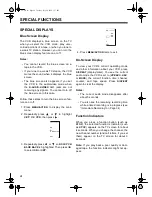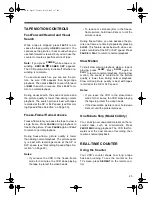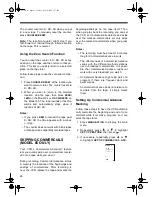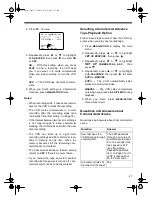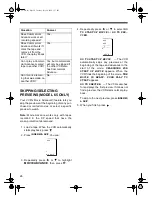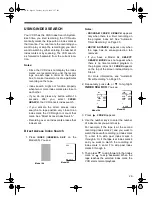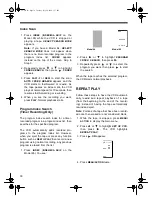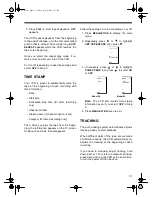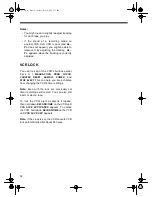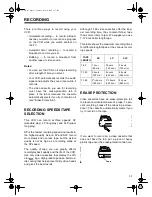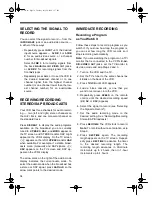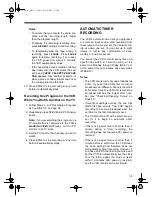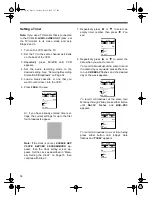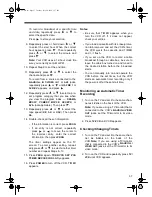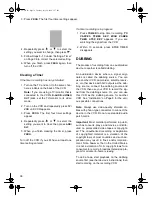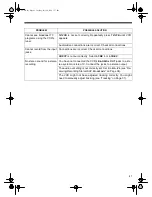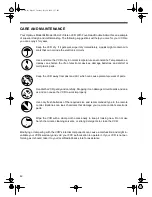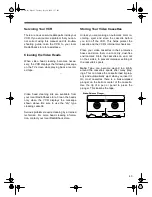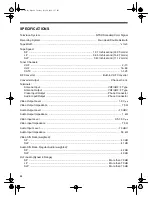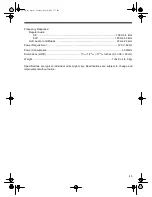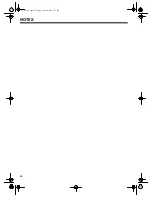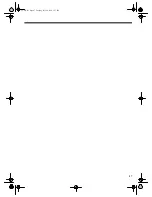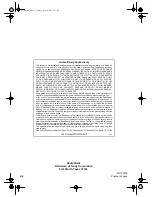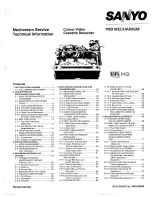
38
3. Press
PROG
. The first four timer settings appear.
4. Repeatedly press
or
to select the
setting you want to change, then press
.
5. Follow Steps 8–13 under “Setting a Timer”
on Page 36 to correct the selected setting.
6. When you finish, press
PROG
again, then
turn off the VCR.
Clearing a Timer
If the timer recording has not yet started:
1. Turn on the TV and set it to the same chan-
nel as
3-CH-4
on the back of the VCR.
Note: If you are using a TV/monitor that is
connected to the VCR’s
R-AUDIO-L/VIDEO
OUT
jacks, set the TV/monitor to its video
mode.
2. Turn on the VCR and repeatedly press
TV/
VCR
until VCR appears.
3. Press
PROG
. The first four timer settings
appear.
4. Repeatedly press
or
to select the
setting you want to clear, then press
ADD/
DLT
.
5. When you finish clearing the timer, press
PROG
.
Turn off the VCR if you still have at least one
timer setting entered.
If a timer recording is in progress:
1. Press
POWER
to stop timer recording.
TO
CANCEL
TIMER
REC
PUSH
POWER
THEN
STOP
KEY
appears if you are
watching the signal from the VCR.
2. Within 10 seconds, press
STOP
. TIMER
disappears.
DUBBING
The process of recording from one audio/video
device to another is called dubbing.
An audio/video device where a signal origi-
nates is called the dubbing source. You can
use another VCR, camcorder, satellite receiv-
er, or other device with A/V outputs as the dub-
bing source, connect the dubbing source and
the VCR, then use your VCR to record the sig-
nal from the dubbing source. Or, you can use
this VCR as the dubbing source for another
VCR. See “Installation” on Page 9 for the vari-
ous possible connections.
Note: Always use video-quality shielded ca-
bles with phono-type connectors to connect the
device to the VCR. Do not use standard audio
patch cords.
Important: Most material performed in public,
such as concerts, plays, and movies, or distrib-
uted on prerecorded video tapes is copyright-
ed. The unauthorized recording or duplication
of copyrighted material is a violation of the
copyright laws of most countries and such du-
plication may result in fines and/or imprison-
ment. Note, however, that in the United States,
it is not a violation of U.S. copyright laws for a
consumer to record a broadcast television pro-
gram for private (in-home) viewing.
To dub a tape, start playback on the dubbing
source first (see that device’s instructions) then
start recording on the recording VCR.
16-634.fm Page 38 Tuesday, July 20, 1999 5:37 PM

